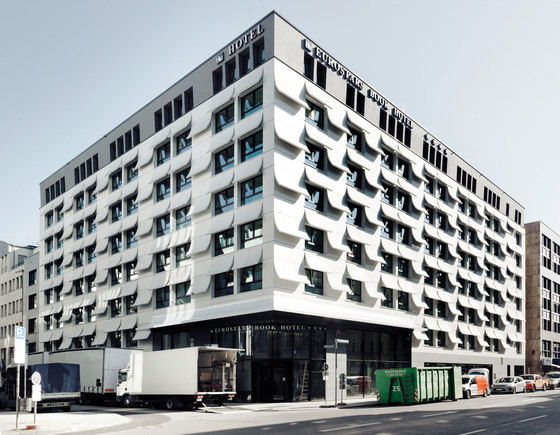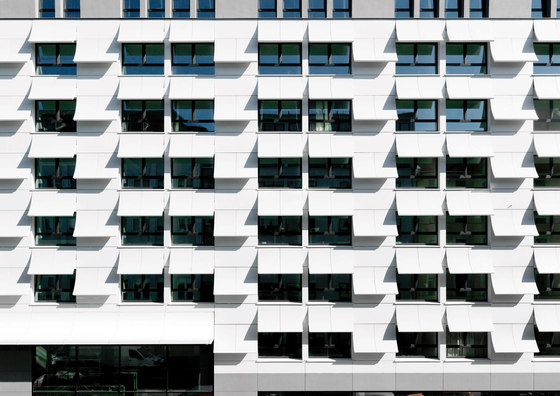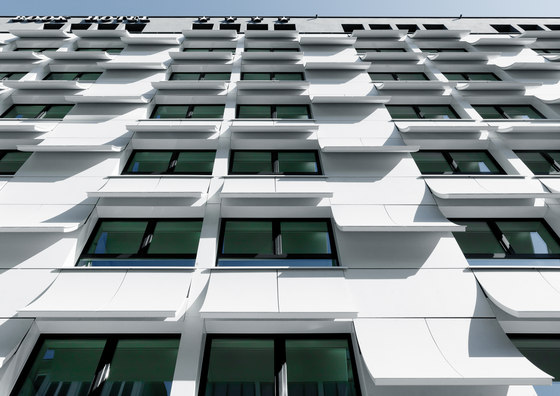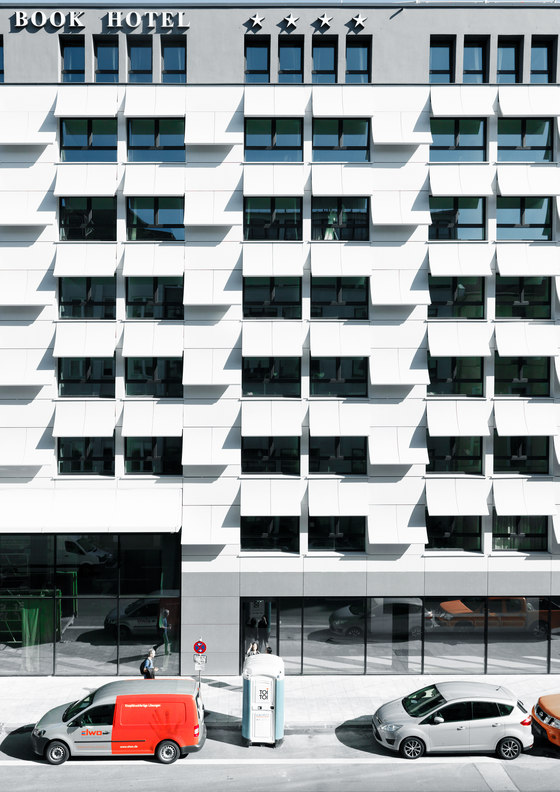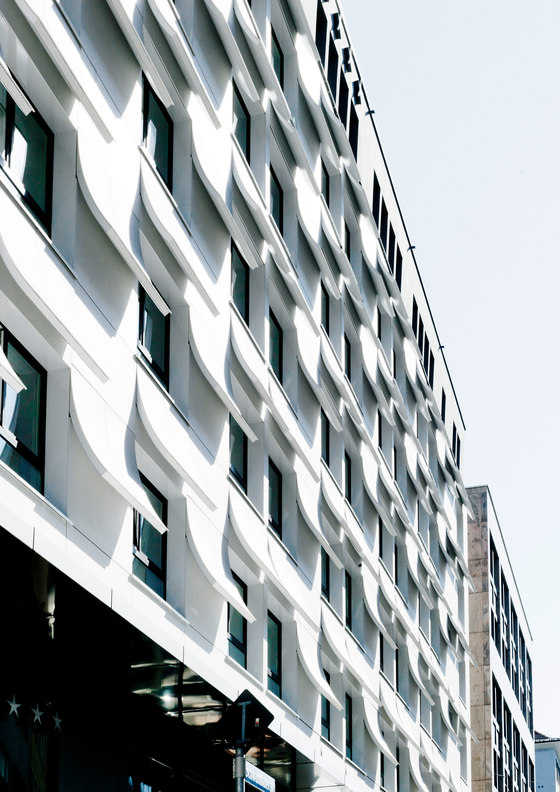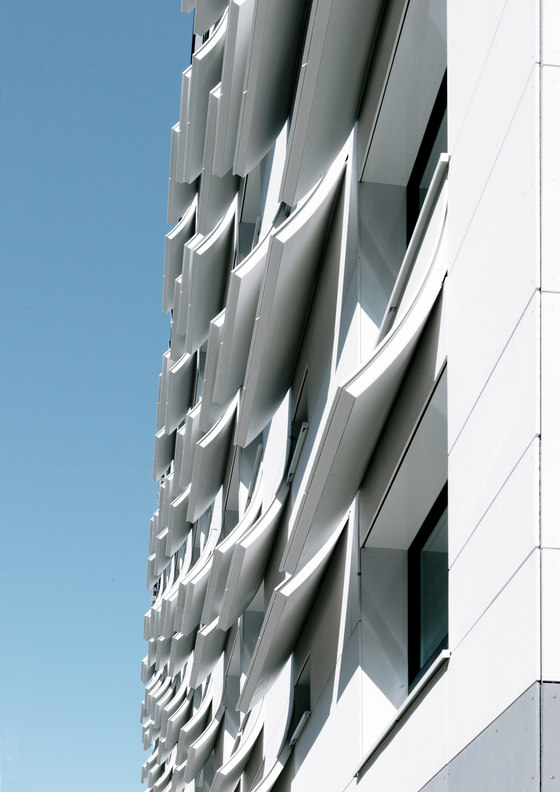CO2 reduction by means of shading systems using fibreC
The Austrian company Rieder is a specialist in the field of concrete and offers innovative solutions comprising glassfibre reinforced concrete for façades. fibreC, the ecological façade panel, enjoys flexible application opportunities and is therefore a popular material for realizing creative architectural concepts. The spectrum ranges from large-scale, thin concrete facades and formed elements to relief facades and three-dimensional monolithic elements. Thanks to the internationally successful fibreC facade panels, more and more ingenious solar protection systems for buildings with high energy efficiency are being undertaken. The newly developed fibreC 3D elements make especially unconventional facades possible.
Energy demand for building cooling systems has been steadily growing for decades. Comprehensive international studies predict that the energy demand for cooling buildings will quadruple within the next 30 years (Adnot et al., 1999; 2003). According to the International Energy Agency, cooling buildings is actually one of the fastest growing energy consumption segments (International Energy Agency, 2004). (e7 Energie Markt Analyse GmbH, 2010) The ESCORP-EU25 Study, which was commissioned by the European Solar Protection Organisation (ES-SO), clearly demonstrated that potential energy savings across Europe of at least 111 million tonnes of CO2 per year could be achieved if solar protection systems were applied in a coordinated way. The demand for cooling in the summer can be reduced by up to 90%. (PHYSIBEL, 2005)
In this regard, Rieder is convinced that facade-related products no longer fulfil purely constructive, protective or aesthetic functions, but rather that the significance of facades as functional construction elements is rapidly growing. In addition to a wide array of design possibilities, the environmentally friendly fibreC glassfibre reinforced concrete panels make it possible to realize individual concepts to shade buildings from the sun.
fibreC glassfibre reinforced concrete as environmentally friendly solar protection system
Numerous architects have recognized that sophisticated constructions make it possible to combine the aesthetic effect of the facade with additional functions. In order to avoid installation and maintenance costs generated by electronically or manually driven shading systems, designers use a second layer as permanent solar protection for the building. These layers play a part in the facade design and also provide solar protection and privacy. Thanks to fibreC facade panels, several of these concepts have already been successfully realized. The thin panels made of glassfibre reinforced concrete are particularly suitable for realizing facades with a special focus on sustainability and aesthetics. The 13 mm-thin concrete panel is a natural product and therefore meets the highest standards of ecological construction regarding construction materials. fibreC facade panels are available in the basic range as a flat panel in ten different colours. Owing to their flexibility, they can also be smoothly laid over corners and edges and, thanks to the fibreC 3D innovation Rieder can now manufacture 3D elements, as well. Glassfibre reinforced concrete therefore provides practically unlimited design freedom regarding formability, colour and finish, which opens the door to a wide variety of practical applications.
1.000 m2 fibreC panels
Colour: ivory & liquide black
Surface: Ferro & Ferro light
The fibreC glassfibre reinforced concrete facade of the Eurostars Book Hotel in Munich is part of a marvellous design idea. The architecture of the building tells its very own story of books as cultural objects. Every floor reflects a literary genre, whereas rooms and corridors are dedicated to famous works. Rieder’s ingeniously formed facade elements represent the turning pages of books, whilst also providing protection from direct solar exposure. A specially developed process allows for manufacturing glassfibre reinforced concrete as round moulds, making individual facades, like the book pages of the Eurostars Book Hotel, possible.
Capella Garcia Arquitectura
SchmidArchitekten Alfred Julius Schmid

